Gophers are territorial animals, with only one gopher per tunnel system (unless they are breeding or tending to their young). However, even a single gopher can cause a lot of destruction in the garden. Luckily, you can manage these rodents without pesticides! Photo Credit: LeonardoWeiss, CC BY 3.0, via Wikimedia Commons
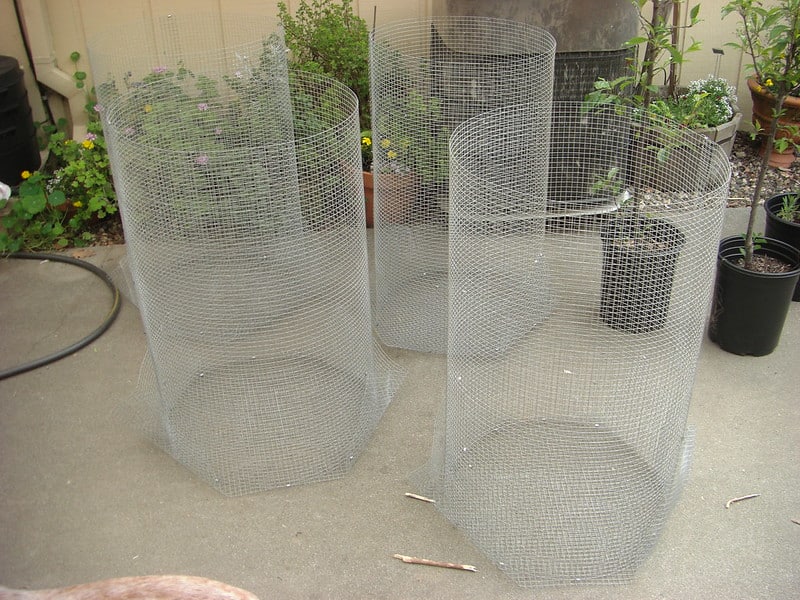
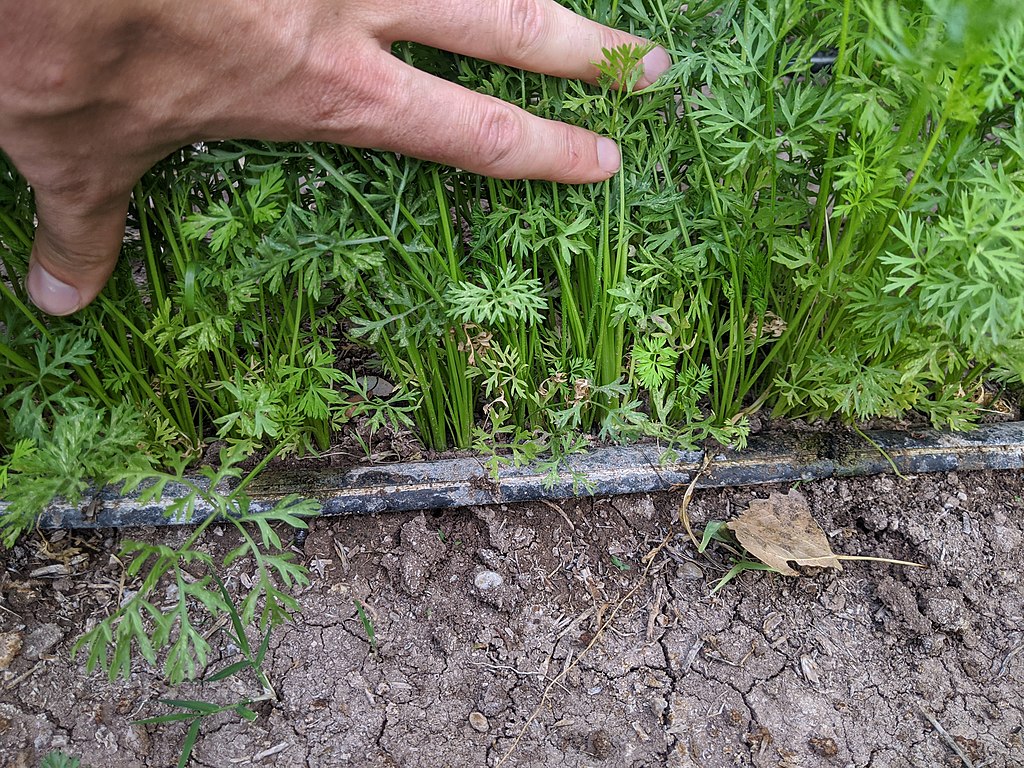
Matthew.kowal, CC by 4.0, via WikiMedia Commons
Prevent Gopher Damage
Gopher are vegetarians and will eat all parts of a plant. But you can prevent gopher damage to plants and trees.
- Gophers can kill shrubs and trees by eating their roots. To prevent this, install new plants in a gopher basket made of hardware cloth. Despite the name, hardware cloth is made of wire – not cloth – and can be purchased at hardware stores and some garden stores. You can even make your own, as this video demonstrates. Be sure to use a basket large enough to allow roots to grow. Although gophers will be able to eat roots that eventually grow through the holes in the basket, your tree should be mature enough at that point to survive that damage.
- Gophers can also damage trees by nibbling at their bark. This is called “girdling” and it is so harmful that the technique can be used to purposefully kill unwanted trees as this video illustrates. Tree baskets that extend 6-12 inches above the soil will prevent this damage.
- Gophers love all of the fruits and vegetables you are growing in your garden! A barrier of ¼” hardware cloth will help to keep them out of your raised beds. This video shows how to install it.
Gophers can also damage irrigation systems with their gnawing teeth. Deter gophers by surrounding irrigation lines with coarse gravel.
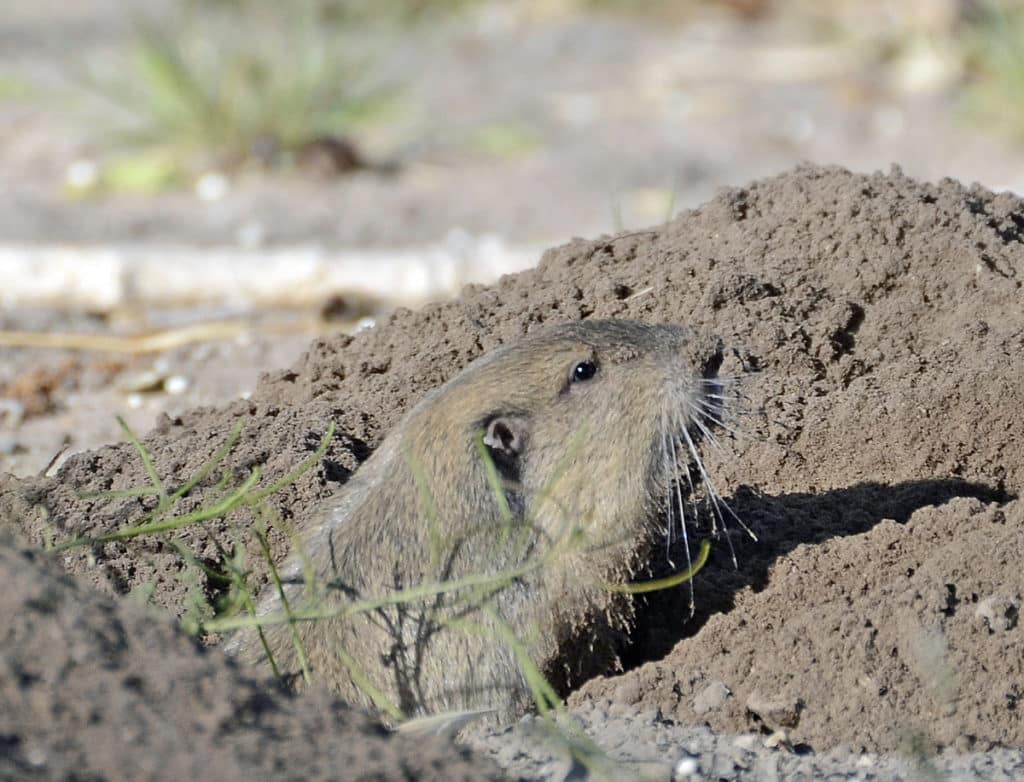
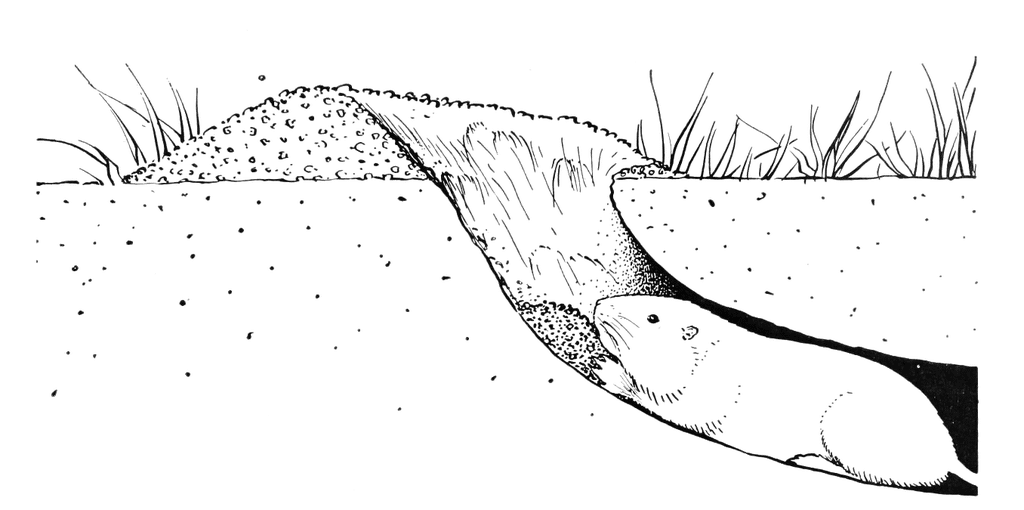
Signs of a Gopher Problem
You might never see them because they spend most of their time in their tunnels. Instead, look for these signs:
- Mounds of dirt. A gopher can make multiple fresh mounds in a single day. It can be hard to tell if a dirt mound was created by a gopher, mole, vole, or ground squirrel. Here are photos of the different mounds to help you identify your culprit. In this video you can watch a gopher pushing dirt out of its hole, creating the classic crescent shaped mound.
- A plant that dies overnight. This may be a sign that a gopher has eaten its roots.
- A plant that suddenly disappears! Check out this video of a kale plant being pulled into a gopher tunnel.
- Damage to tree bark near the ground (this could also be evidence of a vole problem)
- You might get lucky and spy the gopher as he peeks out to nibble on nearby vegetation, as shown in this video.
- If you see these signs, move quickly! Damage can be significant in a very short period of time.
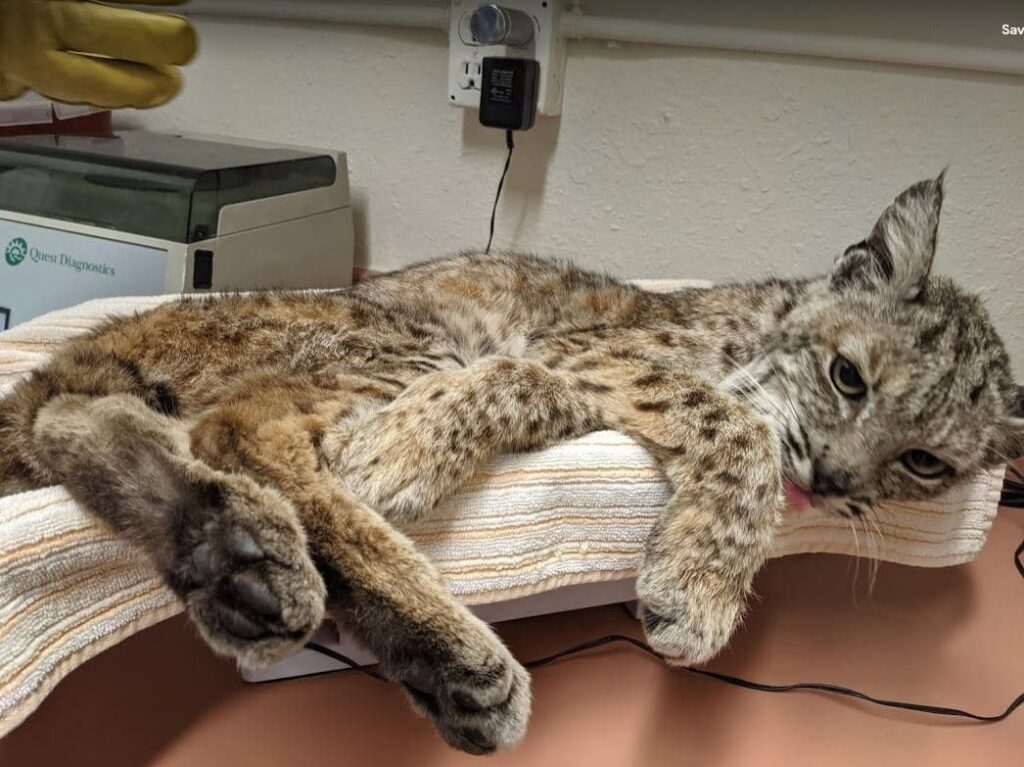

How (Not) to Get Rid of Gophers
Don’t use poison baits!
- It is illegal to place baits above ground. Bait must be inserted directly into the gopher’s tunnel. However, even if legally placed underground, we do not recommend baits.
- Once the gopher eats the bait, anything that eats it will also ingest the poison. This creates a secondary risk to pets and wildlife. WildCare reports that 76% of raptors and other rodent-consuming wildlife brought into their facility have tested positive for secondary rodenticide poisoning, which can cause a slow and painful death.
Steer clear of ineffective treatments.
- There is no evidence that repellents intended to frighten or annoy the gophers are effective (e.g. vibrating stakes, ultrasonic devices, pinwheels, etc).
- Some plants such as garlic, castor bean, and gopher purge have a reputation for repelling gophers. However, they do not work according to scientific studies.
- Don’t use poisonous gas or smoke. Gophers can quickly seal off tunnels to block them.
- Flooding tunnels may bring the gopher briefly to the surface but is primarily a waste of precious water. The large volume of water may also damage your lawn, flood your basement, and loosen the soil, making it easier for all kinds of burrowing rodents to return.
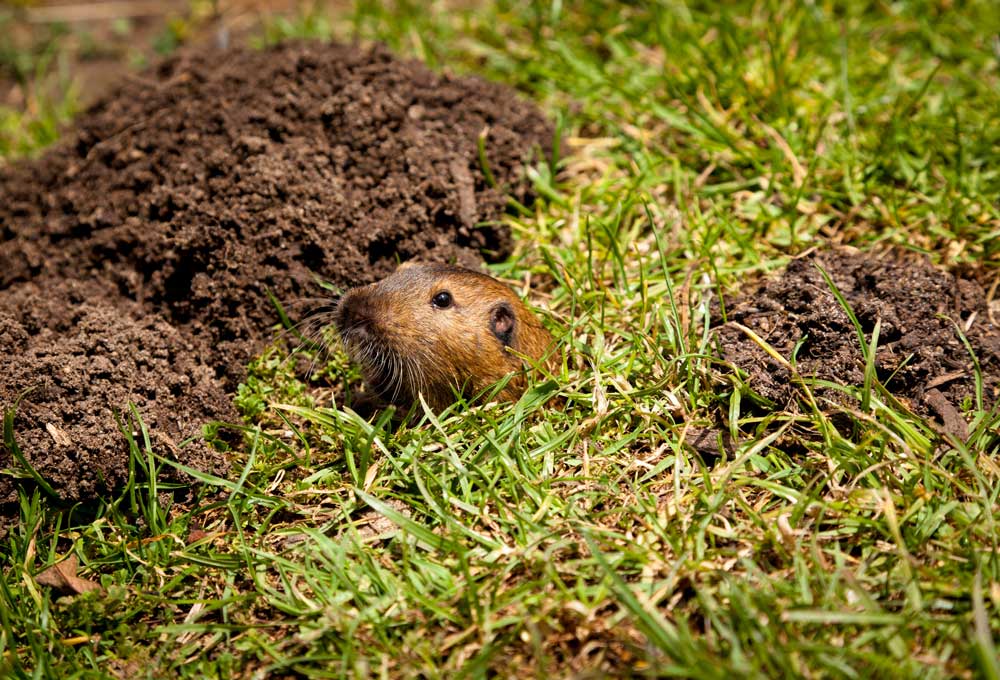
It is critical to identify which tunnels are active.
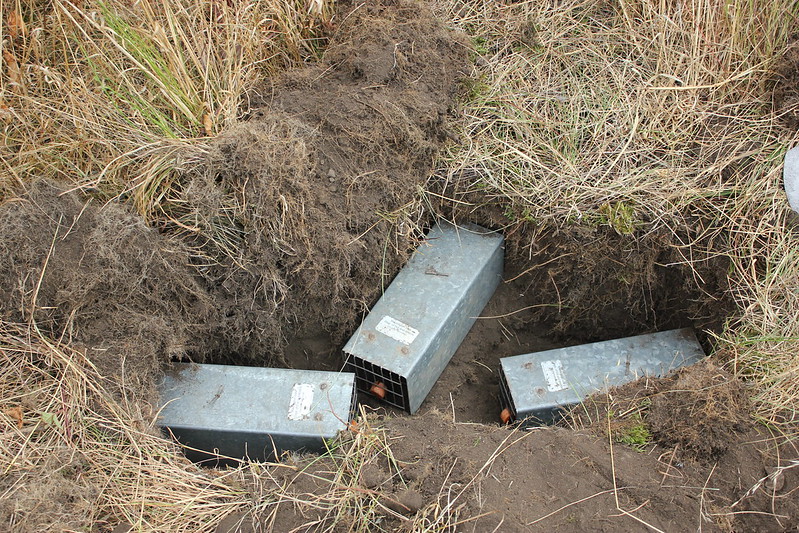
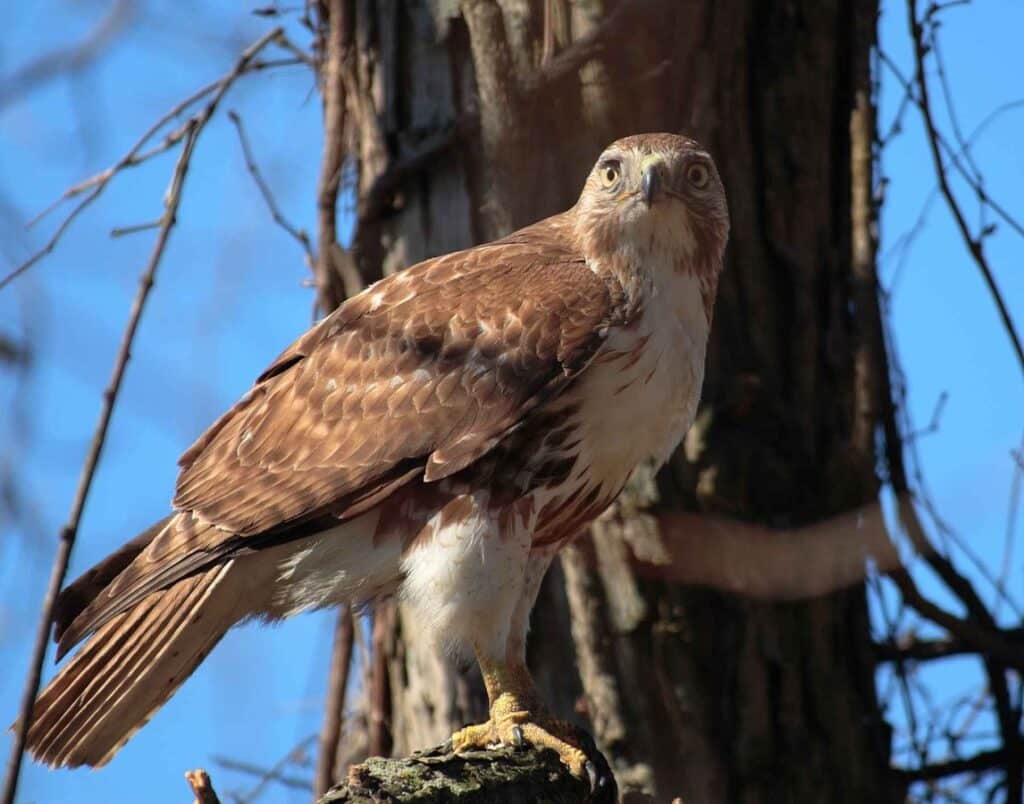
The Best Ways to Get Rid of Gophers
To manage gophers, we recommend:
- Identify which tunnels are actively being used. A dark mound of dirt that feels damp is a good sign. Or, simply flatten out any existing mounds the day before you intend to set your traps and see what new mounds have popped up by morning.
- This video will show you how to use a probe to find the gopher tunnel, where to place your traps, and how to cover the hole you’ve created.
- There are several types of traps you can purchase and you can read about them here. This 10-minute video contains a great overview of a variety of traps, how to find the main tunnel, and how to set the traps [note: toward the end, this video shows a dead gopher caught in a trap]. This video shows how to set the Macabee gopher trap specifically and this video shows how to use the Gopher Hawk trap.
- Raptors and snakes are great natural rodent control! Unfortunately, gophers can inflict significant damage to your garden quickly – you won’t want to wait around, hoping for a predator to eat him. Still, you can encourage raptors to live nearby by hosting an owl nesting box or installing a raptor perch on your property. Here is how you can make your yard more welcoming to snakes.
Are gophers a problem in your neighborhood? A coordinated approach may be most effective. Contact YardSmartMarin if you’d like us to present information to your HOA or other neighborhood organization.